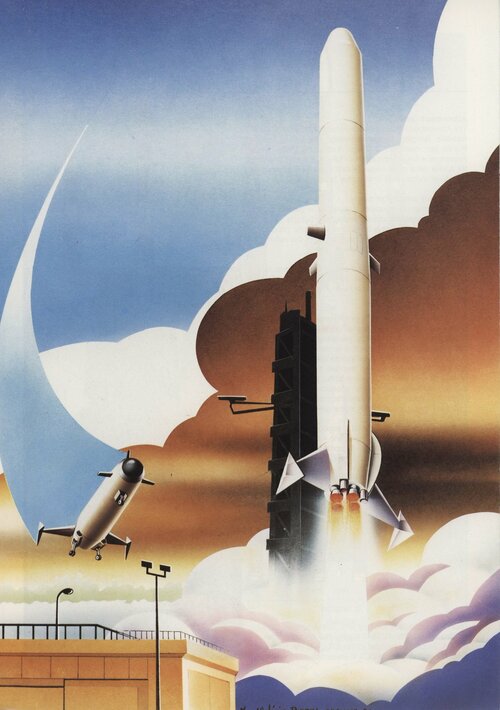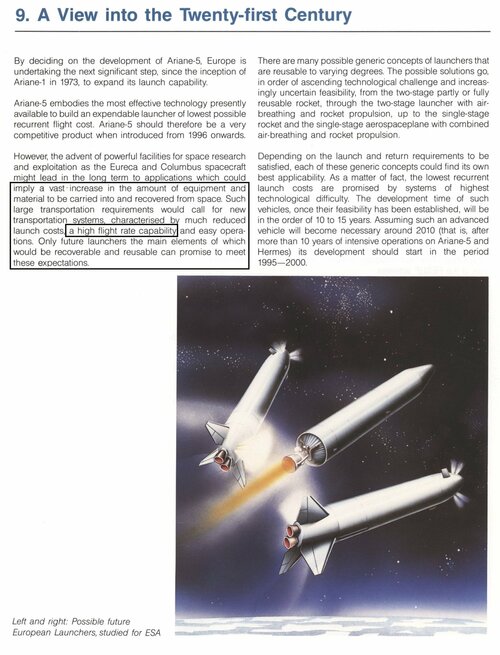- Joined
- 26 May 2006
- Messages
- 32,698
- Reaction score
- 11,967
Attachments
Last edited:
Hello Nik, I also wondered and inquired about exactly the same thing, but for some reason unbeknownst to me my purely curious directly related question about this very particular and honestly confusing issue was deleted. I honestly hope you have more luck in obtaining a straight answer from Archibald before the moderator in charge nukes this part of the thread again as well for whatever unknown and unknowable reason(s).'Porridge Fuel' ??
Would this be super-chilled, so densified, near-slurry cryo-stuff ??
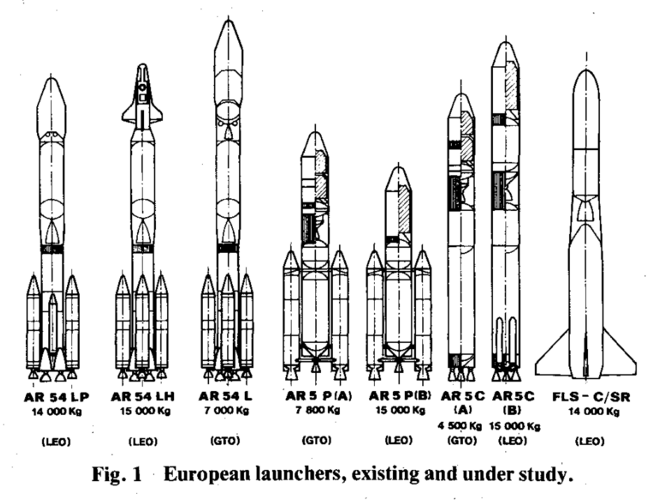
And a description from Ruimtevaart; April 1984
In 1980, Aerospatiale was appointed by ESA to come up with a concrete proposal for the development of the launch system for the 1990s (until after 2000), in a 3-phase study (1980-1985), in cooperation with other industries (surely participating in ARIANE). The study started from all possible launch vehicles to be conceived, i.e., not limited to an ARIANE-like concept. The first phase (1980-1983) was carried out as a preliminary study by Aerospatiale with the result: a single-stage rocket for LEO missions is not a possibility in Europe;
-horizontal launch is not very attractive, nor is the development of new motors (too expensive), which are certainly needed for this purpose;
- Application of high-power cryogenic engines in "all" stages only seems sensible if at least the first stage is recoverable;
- "recovery" of first and second stages is probably not economically justified let alone technically (especially with regard to the second stage).
On the basis of this preliminary study, Aerospatiale together with MBB-ERNO, Aeritalia, Marconi, Dornier, Casa and Fokker started the elaboration of the second stage. This second phase focuses on a deliberately not (very) in-depth study of a two-stage rocket, fully cryogenic (ergo HM60 in both stages), the first stage of which should be able to return to the launch base Kourou * as a "semi" glider. This is the reference configuration (Fig. 6), where simultaneously two other configurations will be considered: a two-stage rocket mounted "in parallel", again fully cryogenic and with a "recoverable" first stage
- a cryogenic (second) stage with two ARIANE first-stage configuration boosters (i.e., with N2 04 and UDMH fuel mixture). These boosters are "recoverable." In all cases, the aforementioned configurations have a cryogenic second stage, equipped with the HM60 and very similar to the second stage of CNES' ARIANE-5. Also under consideration, which would also fit within the framework of the ARIANE-5, is a fairing with half Shuttle volume, however with the possibility of ''recovery''.
The third phase should mainly focus on greater depth with respect to one configuration, which should follow from the second phase. The resultl of this phase is a concrete proposal in 1985 for the ESA development program of launch vehicles for the 1990s and beyond 2000.
* ''Semi'' -glider as the application of jet engines for part of the trajectory is being considered.
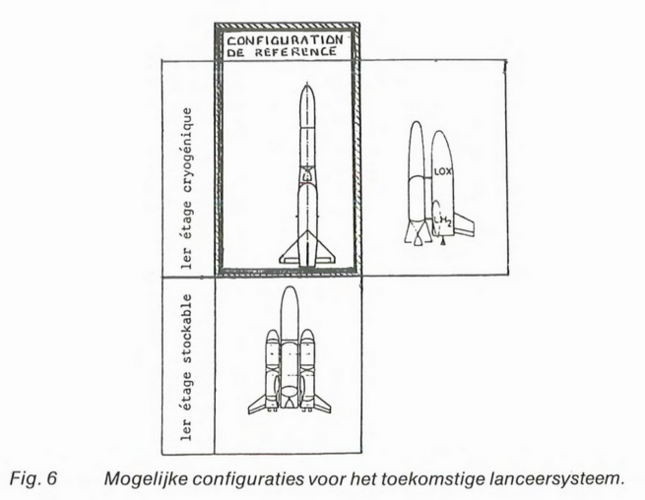
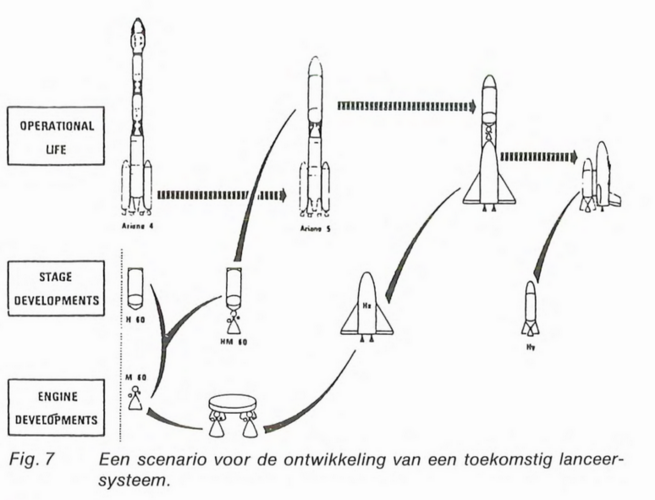
Thanks a lot, I had seen this before. But it seems to be the Result of the preliminary, first Phase study, while the phase 2/3 were not completed yet and would only be so in late 1984
Higher resolution, from ESA archive (shared by @dutchspace)Third one is the prefered design of the 1982-85 "Future launching system" (FLS) study, I’d really love to read more about this, does anyone have ressources about it?View attachment 694607
View attachment 694608
